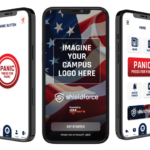In August of 2004, I left the Baltimore City Police Department and entered the wondrous and often mysterious world of healthcare. The University of Maryland Medical Center is a 2-million-square-foot, 665-bed academic hospital with more than 6,000 employees located in downtown Baltimore. As the new director of security, I knew I would have my hands full. Despite my 25 years of urban law enforcement experience, this big-shot detective lieutenant had much to learn.
Having no experience in healthcare security and inheriting a department in crisis, I had to act quickly. Not only did I have to get up to speed with the security department, its personnel and method of operation, I also had to evaluate our healthcare community: its needs, wants and demands.
It was obvious our department needed an overhaul and that partnership, problem solving and prevention, or what we like to call “the three Ps,” had to be implemented to affect the cultural change our force needed. Applying these community-policing principles has proven to be very effective in improving the relationship our department has with hospital staff and visitors, instilling pride and respect among officers, and leading to a significant drop in crime.
Large, Economically Diverse Community Poses a Challenge
The medical center has more than 200 patient care units and departments, and in general terms, virtually every unit has its own personality and culture. Socioeconomically, the employee population reflects the surrounding community – from low-income earners to the very well paid.
Healthcare professionals are well educated and demanding, and nothing should interfere with their ability to provide the highest quality healthcare. Additionally, we can’t forget the literally thousands of patients, visitors, students, vendors, volunteers, dignitaries, construction workers, union representatives and occasional criminal who visit the hospital daily.
With the medical center’s commitment to being open and accessible, this is a challenging environment to say the least. Our department had to learn how to effectively serve and protect such a well-educated, diverse, professional and demanding population, especially with a workforce that tends to be undereducated and underpaid compared to the community being served.
After conducting an assessment of both the security department and our hospital community, it became clear that community policing was just what the doctor ordered. As flexibility is an inherent component of any community policing model, the three Ps (which I first learned about from “Turnaround,” a book written by Los Angeles Police Department Chief William Bratton) would be a good fit at the medical center.
All Officers Adopt Community Policing Approach
Our department chose to utilize a seamless approach where everyone in the department would participate. We were not going to establish a special unit or select group of officers to be “community officers.” Instead, officers were expected to not just partner with department or unit leaders, but with the rank and file as well.
Three things had to occur to ensure success: Each member of the department had to understand the importance of the job and embrace the concept that one person can make a difference; each member would need to be authentically empowered to not only engage the community in problem solving, but to make decisions when necessary; and finally, in order to earn the respect of our community, we would need to develop a professional mind-set. The obstacles were many and varied. The security department had to change the way officers thought about themselves and their community. We had to, in effect, change the culture from one that fit the stereotypical image of a security department to one of a public service department.
Positive Relationships Replace Adversarial Attitude
Previously, the department’s relationship with the community was “us vs. them” and had to be changed to a partnership. This was a challenge as security officers are often considered to be at the bottom of the totem pole in a campus environment.
Pride, value and professionalism had to be instilled. This was accomplished through observation, critiquing security/citizen interaction, correcting behavior, positive and negative reinforcement, and instilling a sense of ownership. They also learned that the more professional we are, the more confidence the staff and patients would have in us.
This was at times a difficult and painful experience. As with most organizations, some employees were resistant to change. In 2005, we saw a considerable amount of turnover as we worked toward changing the security department’s culture and upgrading our personnel.
The department began to engage in critical thinking. Officers learned to not merely accept things as they appear but to step outside of traditional security work and think outside of the box. They were instructed to define the problem, discuss it and solve it.
Through our focus on partnership and problem solving, officers began to see trouble spots, becoming proactive instead of just waiting for something to happen. They began to see opportunity for crime and were able to take countermeasures. As their confidence and professionalism grew, they felt more and more comfortable interacting with the hospital staff, frequently pointing out potential problems, supplying friendly reminders and, at times, asking very pointed questions.
Most Hospital Staff Members Welcome Security Officer Input
To further not only this type of interaction, but also the department’s education and crime suppression/prevention efforts, all officers who have the opportunity are now required to participate in the investigative process. This solidifies the fact that both security and the staff are in this together, improves the officer’s customer service and investigative skills, and increases the efficiency of the apprehension process.
The hospital staff proved far less resistant to these changes than I ever imagined. With the exception of a few supervisors and managers, input from security officers has been welcomed. This success, I believe, is a direct result of our establishing positive relationships and steering clear of imposing our will.
Thefts Decrease by 50%, Assaults by 80%
The results experienced by the medical center’s security department in 2005 as a result of these changes are just short of amazing and have continued into 2006. In 2005 as compared to 2004, the medical center has seen a 50-percent drop in theft, which translates into the savings of thousands of dollars of hospital and personal property.
But even more impressive is that because of our new approach, the entire hospital can share in this success. The dramatic reductions in crime do not merely reflect the security department, but more importantly the medical center as a whole.
This past February we distributed more than 250 security customer satisfaction surveys. The survey asked respondents to assess our uniform appearance, professionalism, job knowledge, friendliness, response time, helpfulness and quality of service. More than 200 surveys were returned, and almost 94 percent of all scores were in the good and excellent categories.
When you look at our crime reductions and the survey results, it is hard to ignore the impact of the three Ps. The change in mind-set and culture brought about through our focus on these principles has resulted in improved relations with our community, fewer complaints, a sense of ownership, and a safer more productive work environment.
It All Comes Down to Customer Service
Partnership, problem solving and prevention boil down to quality customer service. A security department’s clients include everyone who comes into its facility – everyone. At the University of Maryland Medical Center, this ranges from an impoverished psychiatric patient to the hospital CEO to visiting dignitaries. The three Ps provide a flexible platform from which quality customer service can spring.
Vicent Pacelli is the directo
r of the University of Maryland Medical Center Police and Security Department based in Baltimore. He can be reached at [email protected].
For the complete version of this article, please refer to the May/June 2006 issue of Campus Safety Magazine.













